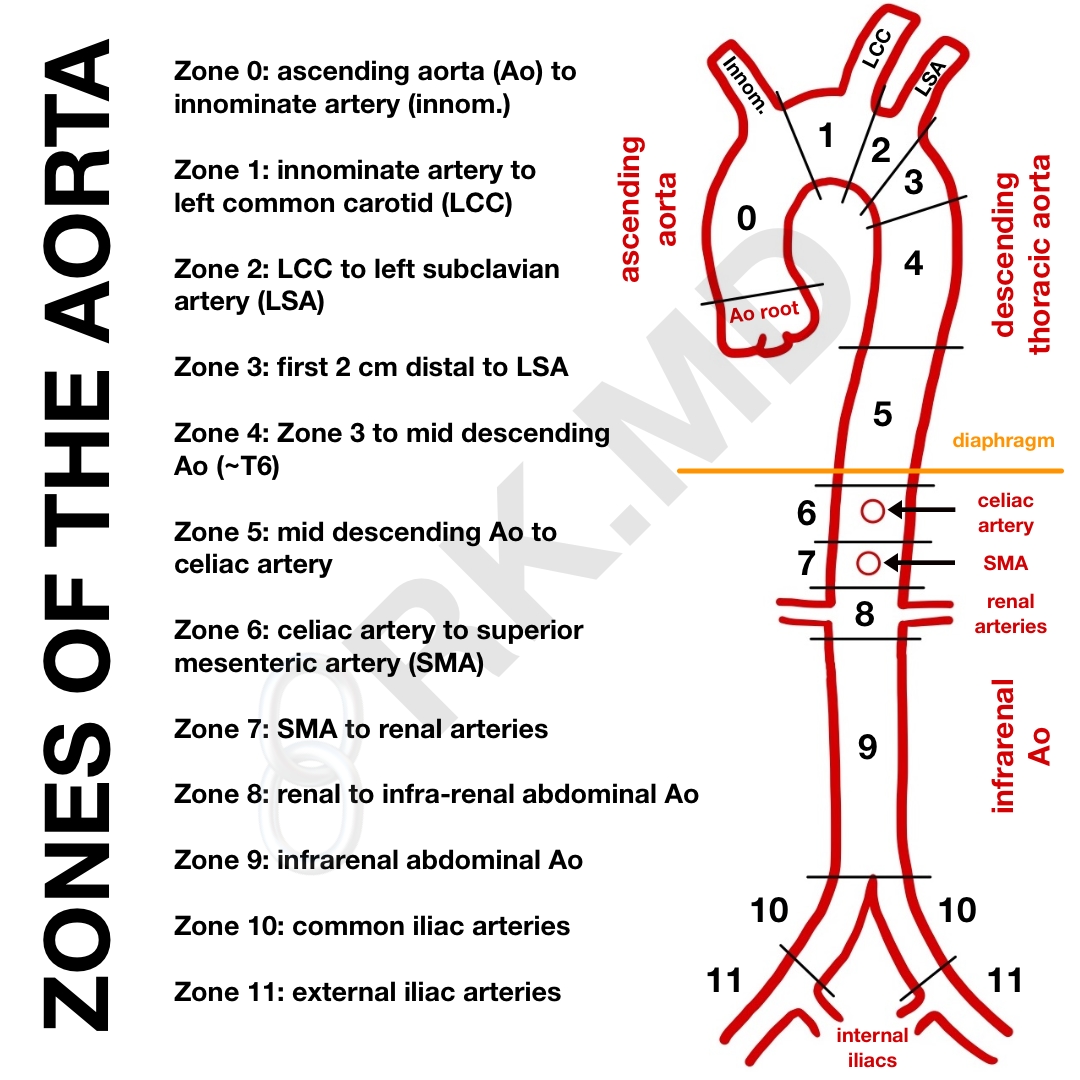
Aortic Dissection Explained Risk Factors, Symptoms, Diagnosis, FAQs
as aortic dissection and its variants (e.g., intramural hematoma [IMH]), rupture of ascending aortic aneurysm, aortic trauma, and penetrating ulcer.Otherentities,suchasTakayasuaortitis(TA),giant-cell(temporal) arteritis(GCA),andmycoticaneurysm,arediscussedbriefly.Lesscom-mon aortic diseases such as aortic tumors (because of their rarity) and

Endovascular Today Expanding the Landing Zone for TEVAR (November 2016)
Surgeons (SVS/STS) Aortic Dissection Classification System of dissection subtype according to zone location of pri-mary entry tear. Fig 4. An aortic dissection with an entry tear in zone 0 is classified as type A. In the example illustrated, the dissection process extends distally to zone 9, such that the dissection is fully classified as A 9.

Schematic drawing outlining the three "landing zones" (green) for the
Aortic Valve Stenosis, Aortic Valve Regurgitation. Aortic valve diseases, including aortic valve stenosis (a narrowed valve opening) and aortic valve regurgitation (a leaking valve), require evaluation and management by a cardiologist or cardiac surgeon. More serious conditions may require surgery to repair or replace the aortic valve.

Aortic Zones A Surgeon's Notes
About Aortic Disease. We work to prevent, detect, and correct the sometimes silent, life-threatening conditions that can affect your aorta, including: Aortic aneurysm -- when the aorta weakens, enlarges, or ruptures. Aortic dissection -- when the aorta separates. We also work closely with congenital and genetic heart disease experts, since.

Angiotomography with multiplanar and threedimensional reconstruction
Aortic Landing Zones. In addition to the standard anatomic descriptors of the aortic anatomy, there is a more technical classification of aortic anatomy that is used to plan, guide, and report aortic interventions, especially endovascular stent-grafting.

Zones Of The Aorta RK.MD
Zones Of The Aorta By Rishi November 22, 2021 0 As a cardiothoracic anesthesiologist and intensivist, I care for many patients in the OR and ICU who have aortic aneurysms or dissections undergoing open/endovascular repair.

Reporting standards for endovascular aortic repair of aneurysms
Zone 2 continues from the celiac artery to the renal artery. Zone 3 extends from the origin of the lowest renal artery to the aortic bifurcation (infrarenal aorta). Zone 1 occlusion is utilized in patients in cardiac arrest or those in hemorrhagic shock with evidence of non-compressible hemorrhage arising below the diaphragm.

Segments of the ascending and descending aorta. rPA = right pulmonary
Small volume aortic occlusion balloons (AOB) have poor occlusion rates in zone I (0-2.8%) and III (4.4-34.4%). Conclusions Men and older age groups have longer CLL distances to zone I and III and introduction depths of AOB must be adjusted.

Aortic Anatomy and Complications of the Proximal Sealing Zone after
Resuscitative endovascular balloon occlusion of the aorta (REBOA) is an adjunct for controlling non-compressible truncal hemorrhage (NCTH) [].The REBOA concept defines three aortic zones (Fig. 1) in which aortic occlusion balloons (AOB) can be placed [].REBOA can be performed with or without fluoroscopic confirmation of the desired location, with zone III for junctional and pelvic bleeding.

Society for Vascular Surgery (SVS) and Society of Thoracic Surgeons
Of all injuries sustained in trauma, the aortic injury is one of the most time-sensitive, life-threatening conditions, second only to head injury as a cause of death. The morbidity and mortality associated with traumatic aortic injury are about 30% within the first 24 hours.

Proximal landing zones for aortic arch and upper descending thoracic
The aortic arch is a continuation of the ascending aorta and begins at the level of the second sternocostal joint. It arches superiorly, posteriorly and to the left before moving inferiorly. The aortic arch ends at the level of the T4 vertebra.

New Aortic Dissection Classification and Practical RealWorld
F. Zone 3 (first 2 cm. distal to left subclavian) G. Zone 4 (end of zone 3 to mid descending aorta ~ T6) H. Zone 5 (mid descending aorta to celiac) I. Zone 6 (celiac to superior mesenteric) J. Zone 7 (superior mesenteric to renals) K. Zone 8 (renal to infra-renal abdominal aorta) L. Zone 9 (infrarenal abdominal aorta) M. Zone 10 (common iliac)

Proximal landing zones for aortic arch and upper descending thoracic
The aorta ( / eɪˈɔːrtə / ay-OR-tə; pl.: aortas or aortae) is the main and largest artery in the human body, originating from the left ventricle of the heart, branching upwards immediately after, and extending down to the abdomen, where it splits at the aortic bifurcation into two smaller arteries (the common iliac arteries ).

Aortic Anatomy and Complications of the Proximal Sealing Zone after
Zone 2: From the celiac trunk to the lowest renal artery Zone 2 is an unused zone because if of difficulty in occluding the bleeding vessel at this aortic location; Zone 3: From lowest renal artery to the aortic bifurcation; Indications. Non-compressible hemorrhage below the diaphragm in the abdomen, pelvis or retroperitoneum

Ultrasound examination zones for the thoracic aorta. The ascending
Aortic dissection Type B Classification Aorta Dissection Reporting Section 1. Introduction Purpose of the document Acute aortic dissection is the most common emergency affecting the human aorta, with high mortality and morbidity without appropriate and time-sensitive treatment.
Society for Vascular Surgery/Society of Thoracic Surgeons (SVS/STS
The aorta is divided into three separate zones for the purposes of REBOA (aortic length varies between individuals) Zone I of the aorta extends from the origin of the left subclavian artery to the coeliac artery (approx 20cm long in a young adult male) Zone II extends from the coeliac artery to the most caudal renal artery (approx 3cm long)